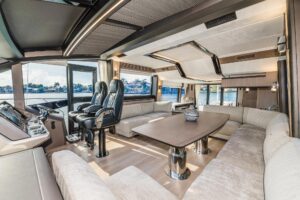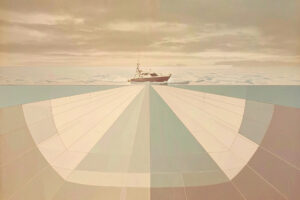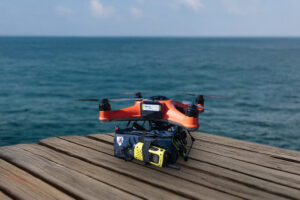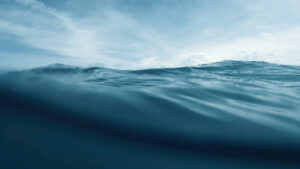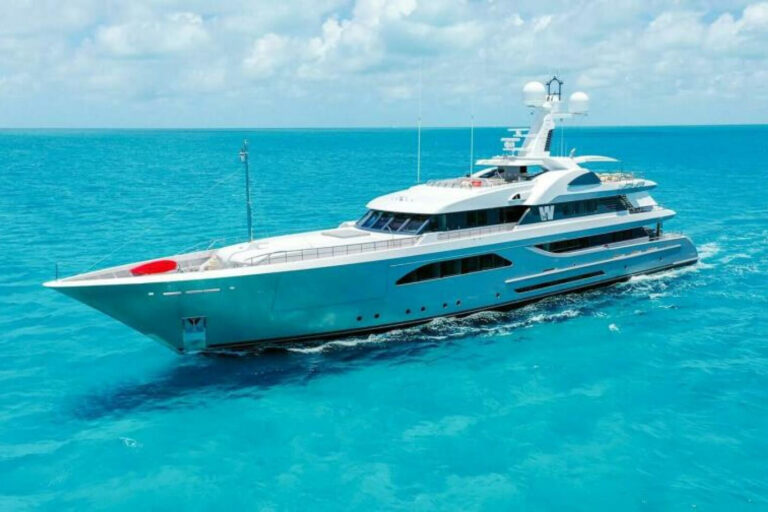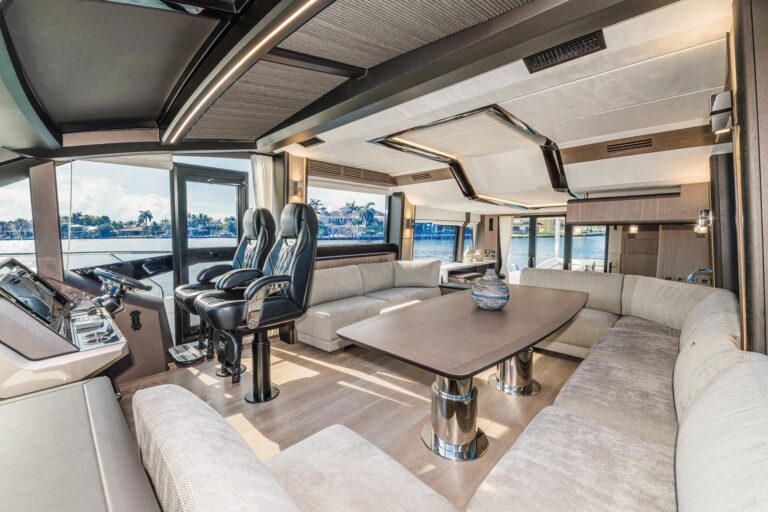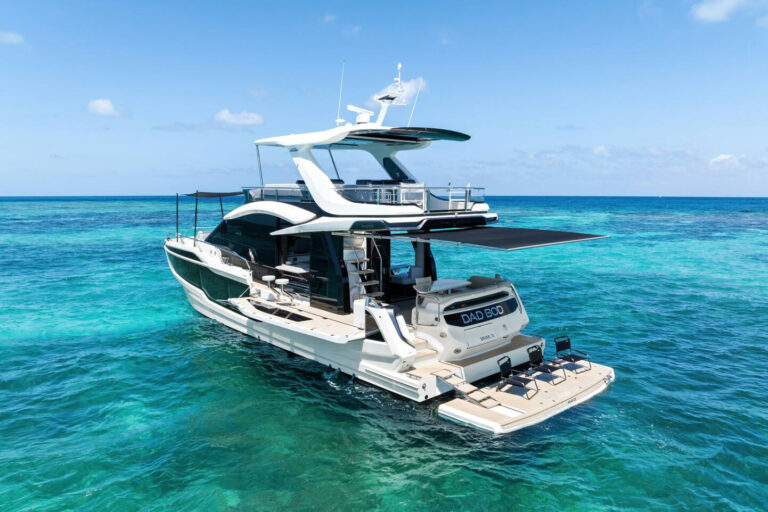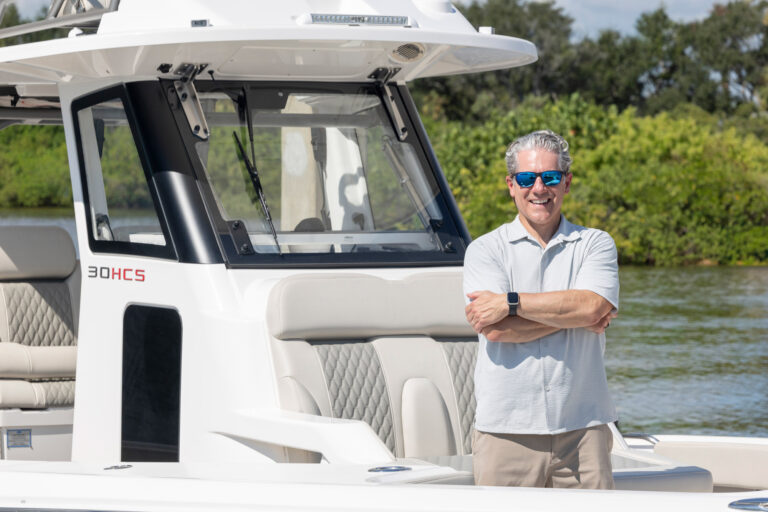
A steady 15-plus-knot breeze turned the Pacific Ocean off Newport Beach, California, into swell city. White-topped 3- to 5-footers greeted the bow of our 60-foot Bertram convertible, and with malice. In the trough, the vessel swayed from chine to chine like a pendulum. Standing up was a challenge. For those prone to mal de mar, it was a good day to be watching from the beach.
That is, unless your yacht had stabilization with serious roll-stopping power.
My Bertram was retrofitted with Side-Power Vector Fin stabilizers that worked equally well when the boat was at rest or underway, at all speeds. With the press of a button, the curved fins engaged, with their fishlike tails flanging out at the bottom. Articulating across a 70-degree arc (which is adjustable to the inboard side of the fin), the system got the Bertram to stop rolling in her tracks. She began to bob up and down like a duck. Side-Power says its fin system can reduce roll by as much as 95 percent underway.
Side-Power introduced Vector Fins in 2013, and they won a “best overall product” DAME (Design Award Mets) that same year at the annual marine trade show in Amsterdam. Industry insiders lauded the Vector Fins for their innovative design: smaller than a traditional flat-fin system with a curved shape to work with the water.
One benefit of having a system with smaller fins is reduced hydrodynamic resistance, which, in turn, helps mitigate the impact on a yacht’s overall performance. For example, my Bertram 60 cruised at around 28 knots before the fins were installed, and she still cruised at around 28 knots after the fins were added. Side-Power says there is potential fuel savings with this setup too. The idea is that with the stabilizers engaged, a captain can run the course he wants to run, as opposed to the one the sea wants him to run. Put another way, the shortest distance between two points is a straight line.
Another potential benefit for angling enthusiasts came to light on day two, when I saw the fins in action on a 65-foot Hatteras. The seas were flat, and as the vessel cruised across the water at 7 to 10 knots, I could see zigzagging bubble trails a few feet outside the boat’s wakes. The trails were similar to the action one sees pulling a teaser lure. The vessel’s captain, Dave Hansen, says the fins and that smoking bubble trail help him raise fish. While I couldn’t verify it, as an avid angler, I could see the potential, and I believed him.
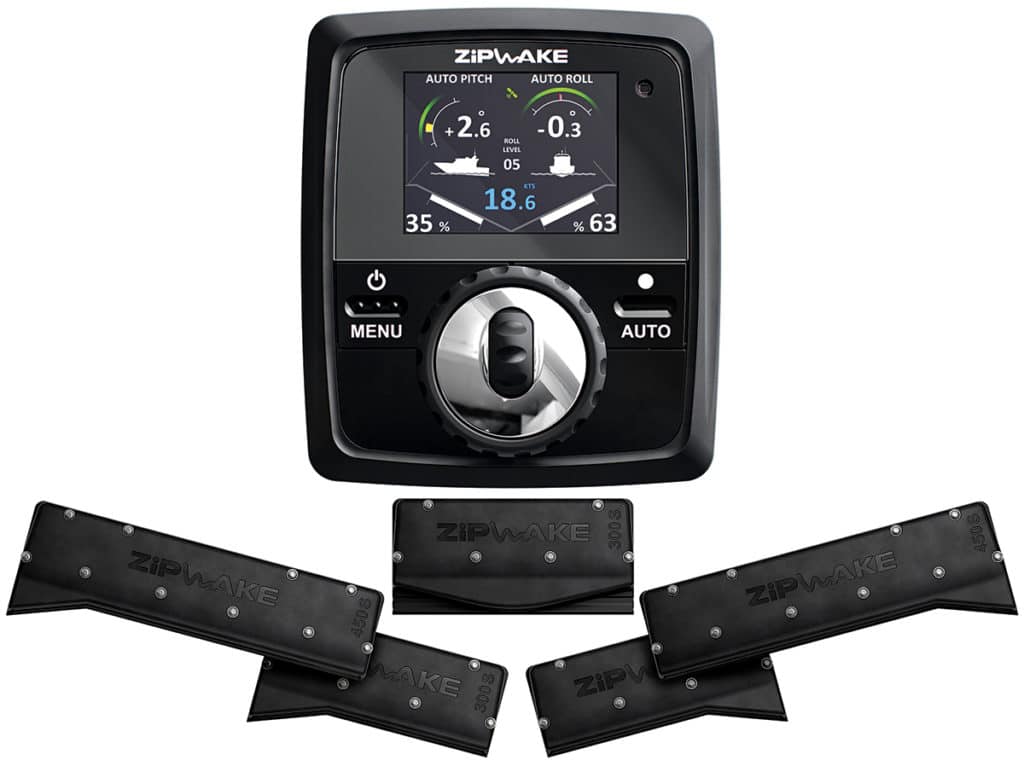
For various-size yachts with different stabilization needs, there are five Vector Fin models ranging in overall size from 6.9 square feet to 17.7 square feet. The foam-cored fiberglass fins are made via a close-molded, vacuum-infusion process. The foam makes the fins weightless in water. They are also designed to break away from the boat on impact.
Side-Power also developed four actuator models to work with each of its fin systems. The actuators have fixed hoses, reducing wear and tear, and the chance for leaks. All exterior parts are made of stainless steel for a long, rust-free life in the engine room, and the bearings are lubricated for the lifetime of the actuator.
I also found the Vector Fins easy to operate by way of a display at the helm. The display showed what the fins were doing and when they were engaged. If I pressed a button, they disengaged. I pressed again, and they were back online.

Another way to keep a yacht rock steady comes from Sweden-based Zipwake. It has developed an interceptor-based trim system, which instantly adjusts a vessel’s running attitude for pitch and roll, enhancing performance in any sea state. Zipwake — designed to work with planing and semiplaning craft from 20 to 60 feet length overall, and at speeds up to 60 knots — comes in a kit. It includes mounting templates, interceptor blades (a vessel can have up to six interceptors, depending on trim required and transom space available), control panels and cabling. An experienced do-it-yourselfer could install this system. And the through-hull cable fitting from the hull mount into the boat can be hidden below the waterline or installed above, owner’s choice. Once Zipwake is installed, a yacht owner plugs in basic vessel specs: length, beam and displacement. After that, the helmsman can hit auto, and the system is functioning.
My test boat for the Zipwake was a Cabo 35 flybridge called Swagger. The wind was puffing in the 15-plus-knot range, and the boat was listing to port without Zipwake engaged. Our captain pressed the auto button, and the boat got vertical, taking off north at 30-plus knots with a flat running attitude. The effect was instantaneous.
Going into hard-over turns, the system’s auto roll feature eliminated excessive inboard heel and outboard heel. The interceptors have a deployed depth of just 30 mm (about 1.18 inches), reducing drag. They drop quickly too: 1.5 seconds.
If you’re looking for an upgrade that increases the at-sea comfort quotient, Side-Power’s Vector Fins and Zipwake’s trim system can help.

